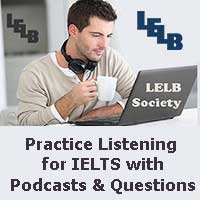History of Books IELTS Listening Reading Practice
History of Books IELTS Listening Reading Practice
Lecturer, author or publisher: Julie Dreyfuss on TED-Ed
History of Books IELTS Reading Practice
What is a book?
What makes a book a book? Is it just anything that stores and communicates information? Or does it have to do with paper, binding, font, ink, its weight in your hands, the smell of the pages? Is this a book? Probably not. But is this? To answer these questions, we need to go back to the start of the book, as we know it, and understand how these elements came together to make something more than the sum of their parts.
The History of Books
The earliest object that we think of as a book is the codex, a stack of pages bound along one edge. But the real turning point in book history was Johannes Gutenberg’s printing press in the mid-fifteenth century.
The concept of movable type had been invented much earlier in Eastern culture, but the introduction of Gutenberg’s press had a profound effect. Suddenly, an elite class of monks and the ruling class no longer controlled the production of text. Messages could spread more easily and copies could constantly be produced, so printing houses popped up all over Europe.
The Skeleton of a Book
The product of this bibliographic boom is familiar to us in some respects, but markedly different in others. The skeleton of the book is paper, type and cover. More than 2,000 years ago, China invented paper as a writing surface which was itself predated by Egyptian papyrus. However, until the 16th century, Europeans mainly wrote on thin sheets of wood and durable parchment made of stretched animal skins. Eventually, the popularity of paper spread throughout Europe, replacing parchment for most printings because it was less expensive in bulk.
The Function of Inks in the History of Books
Inks had been made by combining organic plant and animal dyes with water or wine. But since water doesn’t stick to metal type, use of the printing press required to change the oil-based ink. Printers used black ink made of a mixture of lamp soot, turpentine and walnut oil.
And what about font size and type? The earliest movable type pieces consisted of reversed letters cast in relief on the ends of lead alloy stocks. They were handmade and expensive, and their designs were as different as the people who carved their molds. Standardization was not really possible until mass manufacturing and the creation of an accessible word processing system.
The Generation of Fonts
As for style, we can thank Nicolos Jenson for developing two types of Roman font that led to thousands of others, including the familiar Times Roman. Something had to hold all this together, and until the late 15th century, covers consisted of either wood or sheets of paper pasted together. These would eventually be replaced by rope fiber millboard, originally intended for high-quality bindings in the late 17th century, but later as a less expensive option. And well today’s mass-produced cover illustrations are marketing tools, the cover designs of early books were made to order.
The History of Book Spines
Even spines have a history. Initially, they were not considered aesthetically important, and the earliest ones were flat rather than rounded. The flat form made the books easier to read by allowing the book to rest easily on a table, but those spines were damaged easily from the stresses of normal use. A rounded form solved that issue, although new problems arose, like having the book close in on itself. But flexibility was more important, especially for the on-the-go reader.
Future Formats of Books
As the book evolves and we replace bound texts with flat screens and electronic ink, are these objects and files really books? Does the feel of the cover or the smell of the paper add something crucial to the experience? Or does the magic live only within the words, no matter what their presentation?

2. What was ink originally made from?
What is the difference between “being made from” and “being made of”?
1. What was the problem of flat spines?